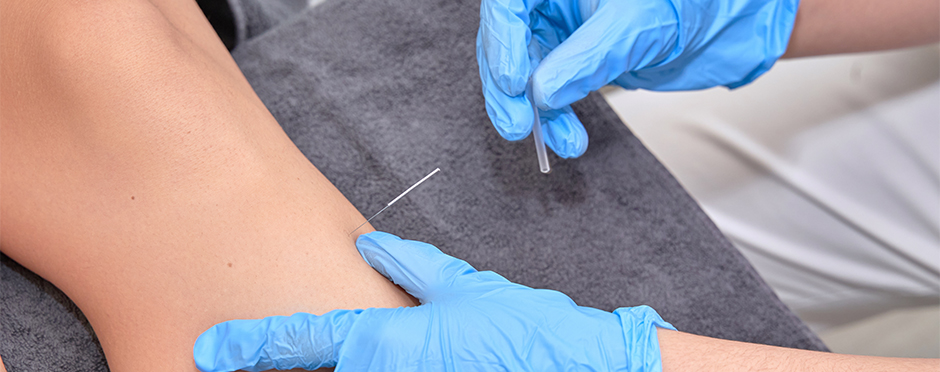
How Dry Needling Can Play A Beneficial Role In Physical Therapy
Leave a CommentDry needling and acupuncture are two commonly utilized techniques to help treat pain or movement dysfunction. While both dry needling and acupuncture require the insertion of a monofilament needle, there are very few commonalities between the two. Let’s take a closer look at how they are used in practice and how dry needling plays a role in physical therapy.
Acupuncture
Acupuncture is part of traditional Chinese medicine and is most utilized for pain and stress management. When acupuncture is performed, the needles are placed just through the skin in specific points throughout the body that are determined by following meridians to re-balance the energy flow1.
Dry Needling
Dry needling is a new buzzword in physical therapy and has been widely researched in modern Western medicine. But it is not the same as acupuncture. So, what is dry needling? Dry needling is when a thin needle is utilized without medication to treat pain, tightness, or other dysfunctions related to pain and movement abnormalities2.
Dry needling can also help with chronic pain, muscle, tendon, or ligament dysfunction, as well as scarring. The technique can be used to provide relief to release restrictions and promote healing of the tissues treated. The needle also stimulates the nervous system to encourage a “reset” of the muscle when tissue is stimulated, which could include obtaining a “twitch” response.
While dry needling can be of large benefit for pain and movement dysfunction, it typically is not a stand-alone treatment. Pairing dry needling with physical therapy tends to have the best results. Dry needling may help, but it requires strengthening and stabilization to maintain the effect. This is where a comprehensive physical therapy plan of care comes in for optimal results.
Have questions about dry needling, or interested in seeing if it can benefit you? Connect with your local Athletico team to learn more about your options. A trained or certified dry needling clinician can help provide recommendations and determine the most appropriate plan of care, including if dry needling would be an appropriate part of your treatment. Get started with a free assessment! Free assessments are available in-clinic and virtually through our telehealth platform.
*Per federal guidelines, beneficiaries of plans such as Medicare, Medicaid, Tricare, VHA and other federally funded plans are not eligible for free assessments.
The Athletico blog is an educational resource written by Athletico employees. Athletico bloggers are licensed professionals who abide by the code of ethics outlined by their respective professional associations. The content published in blog posts represents the opinion of the individual author based on their expertise and experience. The content provided in this blog is for informational purposes only, does not constitute medical advice and should not be relied on for making personal health decisions.
References:
1. https://www.mayoclinic.org/tests-procedures/acupuncture/about/pac-20392763
2. https://www.choosept.com/health-tips/dry-needling-physical-therapist-what-you-should-know
3. https://www.mayoclinichealthsystem.org/hometown-health/speaking-of-health/on-pins-and-needles-just-what-is-dry-needling
